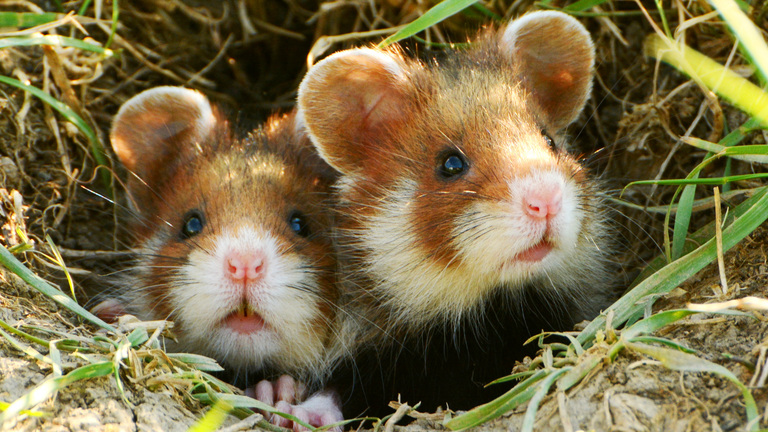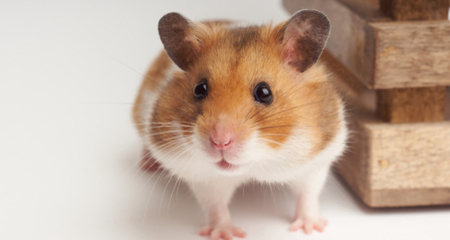Characteristics of Various Hamster Breeds
Hamsters are popular small pets known for their adorable features and playful personalities. With several different breeds available, it’s essential for prospective owners to understand the unique characteristics of each type. In this article, we will explore various hamster breeds, their temperaments, sizes, and care needs, making it easier for you to choose the perfect pet for your home.
Syrian Hamster Traits
The **Syrian hamster**, also known as the golden hamster, is the most common hamster kept as a pet. Typically, these hamsters are larger than other breeds and can grow up to 6 inches long. They come in various colors and patterns, with some exhibiting long hair known as “teddy bear” hamsters. One standout feature of Syrian hamsters is their generally friendly temperament, which makes them great companions for families, especially those with children.

Social Behavior
Syrian hamsters are typically solitary creatures, which means they prefer to live alone rather than in pairs or groups. This solitary nature can help prevent territorial disputes, but it also means that each hamster requires a spacious environment to roam and explore. As a result, it’s crucial to provide Syrian hamsters with adequate space, enrichment, and daily handling for socialization. Owners must monitor their little friends and create a safe environment to ensure they develop good behaviors.
Care Requirements
Caring for a Syrian hamster is straightforward but requires attention to their specific needs. They should have a comfortable habitat with bedding material that encourages burrowing, such as aspen shavings. Their diets must be rich in seeds, fruits, vegetables, and specially formulated hamster pellets. Additionally, ensure access to fresh water at all times, and offer chew toys to keep their teeth healthy and stimulate mental engagement.
Dwarf Hamster Breeds
Dwarf hamsters, encompassing several species such as the Campbell’s dwarf hamster, Winter White dwarf hamster, and Roborovski dwarf hamster, are smaller in size compared to their Syrian counterparts. They generally measure around 2 to 4 inches in length. Dwarf hamsters can vary significantly in their behavior and temperament, particularly between species, making it vital for potential owners to do their research.
Campbell’s Dwarf Hamster
The **Campbell’s dwarf hamster** is known for its sociable nature, often thriving in pairs or small groups. These hamsters are adaptable and tend to be less territorial than other dwarf breeds. Such an environment encourages their friendly demeanor, making them delightful pets for new hamster owners. That said, potential owners should always introduce new hamsters gradually to minimize stress.
Roborovski Dwarf Hamster
On the other hand, the **Roborovski dwarf hamster** is one of the most energetic and curious hamster breeds. They typically tend to be more skittish and may require more handling to become comfortable with their humans. Recognized for their small size and rapid movements, Roborovskis are amusing to watch but may not be the best choice for younger children due to their high activity levels. An adequate habitat, with plenty of exercise space, is essential for this breed to thrive.

Winter White Dwarf Hamster Features
The **Winter White dwarf hamster** is another delightful dwarf breed known for its striking winter coat that turns white. Their fun patterns make them unique among other hamsters, and their playful nature ensures they are entertaining pets. Owners should note the breed’s inclination to store food, so providing ample nesting materials and a digging area is essential for their well-being.
Behavioral Traits
Winter White dwarf hamsters are relatively easy to handle, which can help them bond closely with their owners. They can also coexist with companions, but it’s important to monitor interactions to avoid aggression orfood competition. Daily interaction and socialization time play critical roles in ensuring your hamster feels safe and comfortable interacting with you. Owners can also encourage their hamsters to exhibit foraging behaviors by hiding small treats around their habitat.
Environment and Enrichment
Like others in the dwarf category, Winter White dwarf hamsters require spacious habitats with proper bedding for nesting. Owners should provide various toys, hiding places, and exercise wheels where hamsters can expend energy creatively. A balanced diet of high-quality pellets, veggies, and occasional treats will keep them healthy and reduce signs of boredom.
Chinese Hamster Characteristics
The **Chinese hamster** is not as commonly kept as the previously mentioned breeds but offers its own charm. Slightly longer than other types, Chinese hamsters can reach up to 4 inches in length and possess a long-tail characteristic that makes them distinct. These little beings exhibit a mischievous attitude and can be quite interactive, leading to fun owners—or in some cases, trouble, as they are known for escaping when given the opportunity!
Housing Requirements
Chinese hamsters are very agile and need habitations that cater to their inquisitive nature. Vertical environments with platforms to climb and play keep them mentally stimulated. Well-constructed cages should prevent escapes, especially for an adventurous species like this. Owners are encouraged to create a diverse space with various toys and multiple levels.`
Diet and Health Care
As with other hamster breeds, a good diet is vital for the health of Chinese hamsters. A mix of protein-rich foods, fresh fruits, and moderate greens is necessary for their diet. Routine health checks will help an owner stay ahead of any issues, especially checking their teeth and ensuring they don’t overeat, setting up for weight issues as they enjoy their food.
Key Takeaways
- Syrian hamsters are friendly and generally suited for novice pet owners.
- Dwarf hamster breeds, including Campbell’s and Roborovski, have different personalities, making research essential for potential owners.
- Chinese hamsters exhibit unique behaviors and require dynamic habitats for stimulation.
- Regardless of breed, a proper diet, housing, and socialization are essential for keeping hamsters healthy and happy.
FAQ
1. What is the best hamster breed for families with children?
The **Syrian hamster** is often recommended for families with children due to its friendly disposition and ability to handle gentle interaction well. It is larger than dwarf breeds, making them easier to hold while teaching kids proper handling techniques. Regular socialization helps the hamster become accustomed to its surroundings.
2. Can dwarf hamsters live together?
Yes, certain dwarf hamster breeds, particularly the **Campbell’s dwarf hamster**, can coexist if introduced properly and maintained in spacious cages. Monitoring interactions is essential as competition for resources can lead to aggressive behavior. Properly socialized dwarf hamsters benefit from companionship in the right circumstances.
3. What do I need to provide for my hamster’s environment?
A hamster’s environment should include a secure and spacious cage, suitable bedding material, hiding spaces, chew toys, and an exercise wheel. Each breed has specific needs, so ensure to research your hamster’s requirements for optimal health and happiness.
4. How much time should I spend with my hamster?
Hamsters thrive on regular interaction. Aim for at least 30 minutes a day to handle and bond with your hamster while providing enrichment through play. Routine interaction helps build trust, allowing them to feel secure in their habitat and around their owners.
5. Are hamsters nocturnal or diurnal?
Hamsters are primarily **nocturnal**, which means they are most active at night. While this makes them engaging pets for late-night or evening individuals, it’s crucial to provide enrichment and safe areas for mining and tunneling during their active hours to keep them satisfied.
